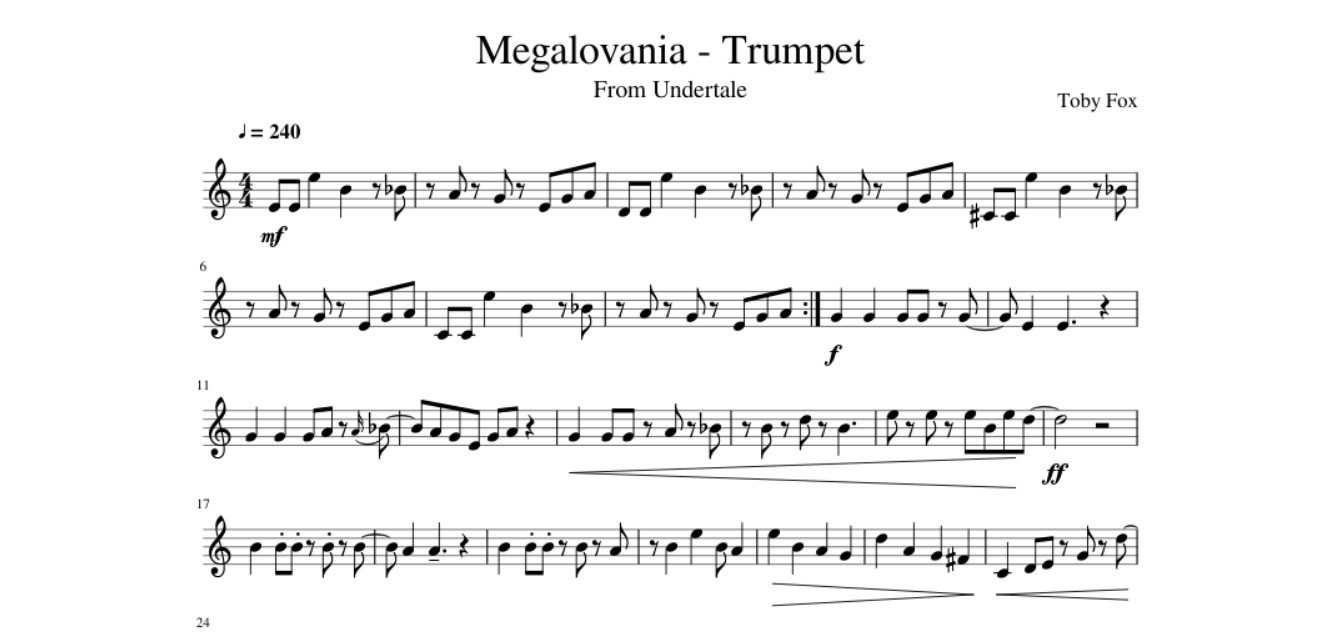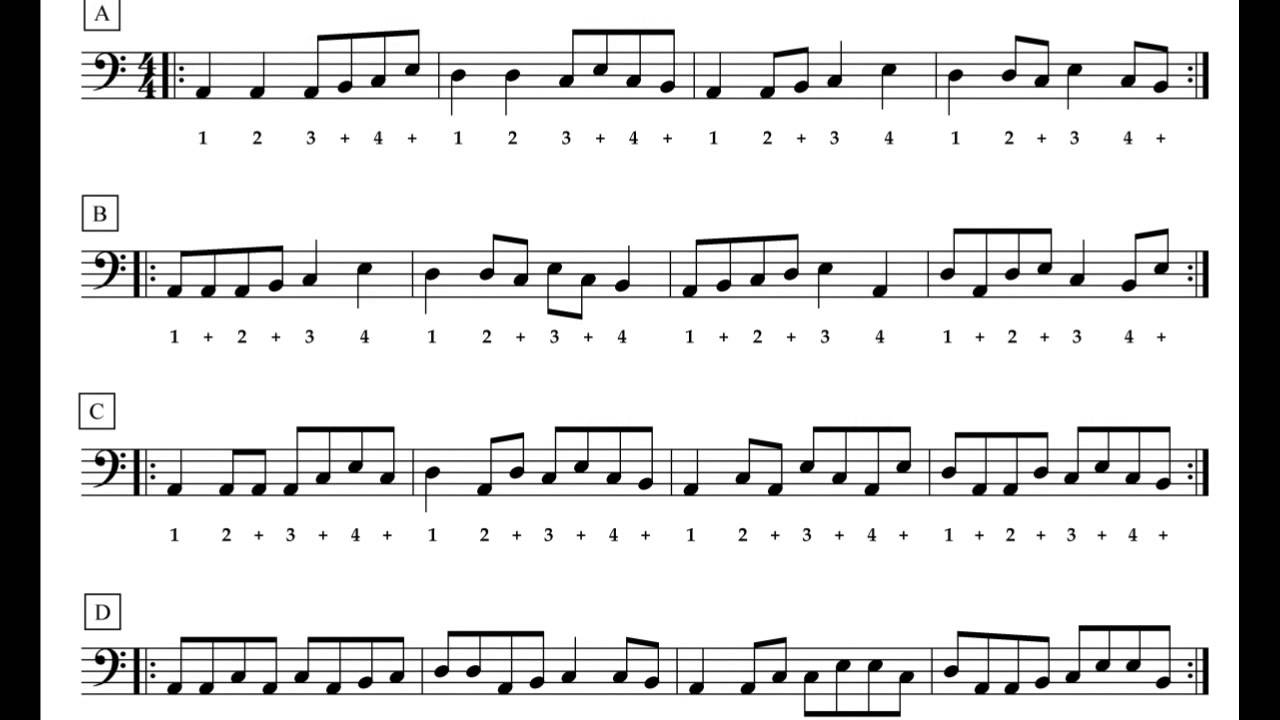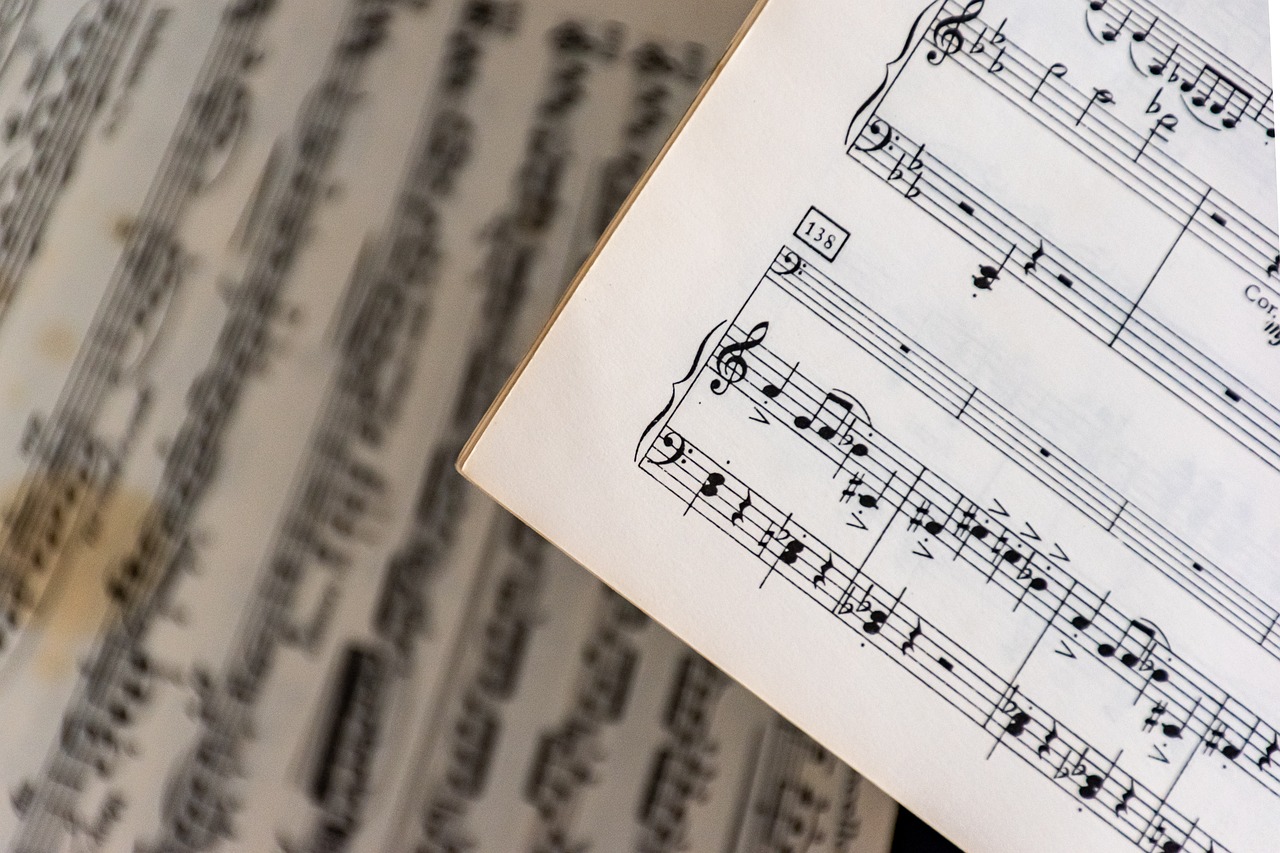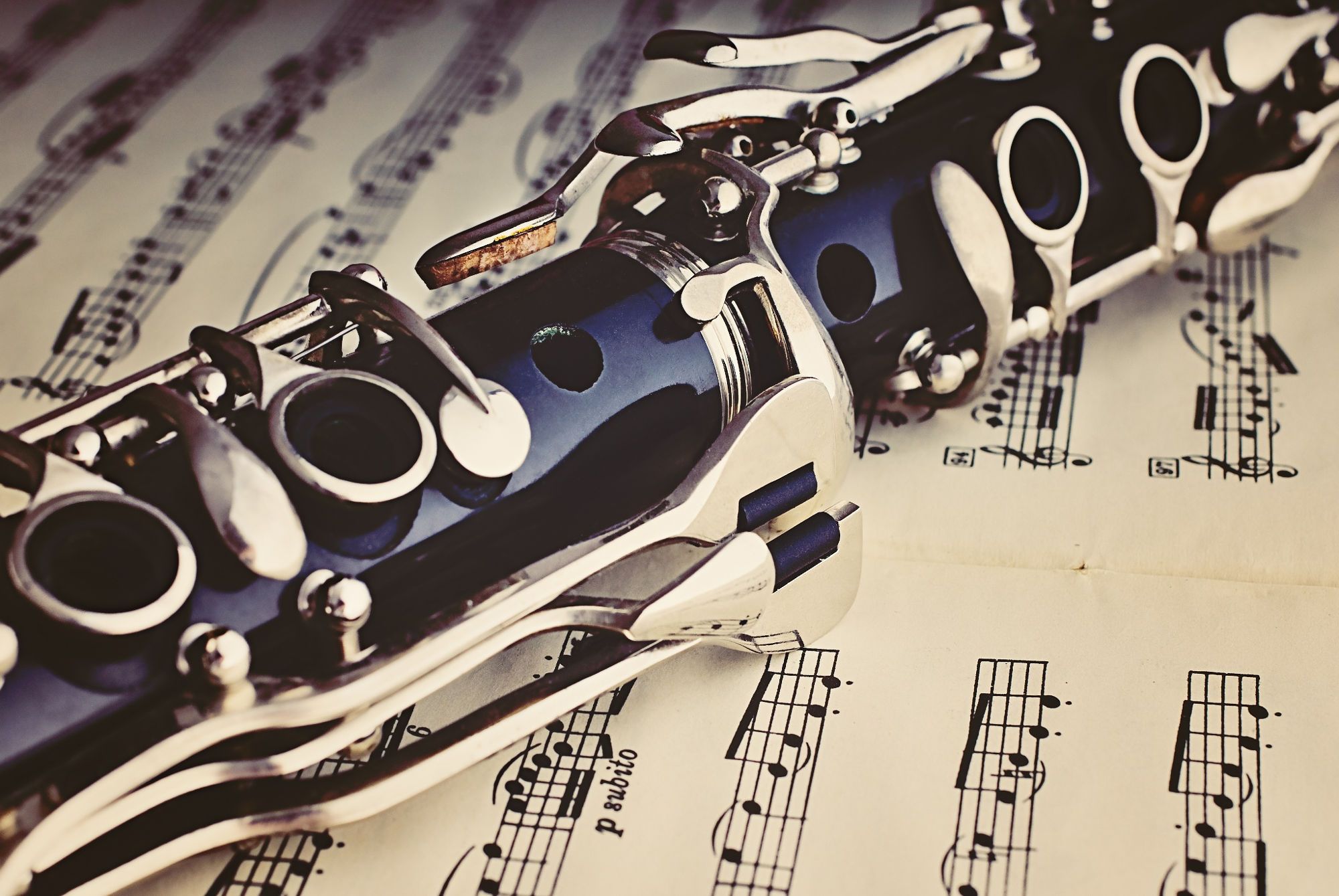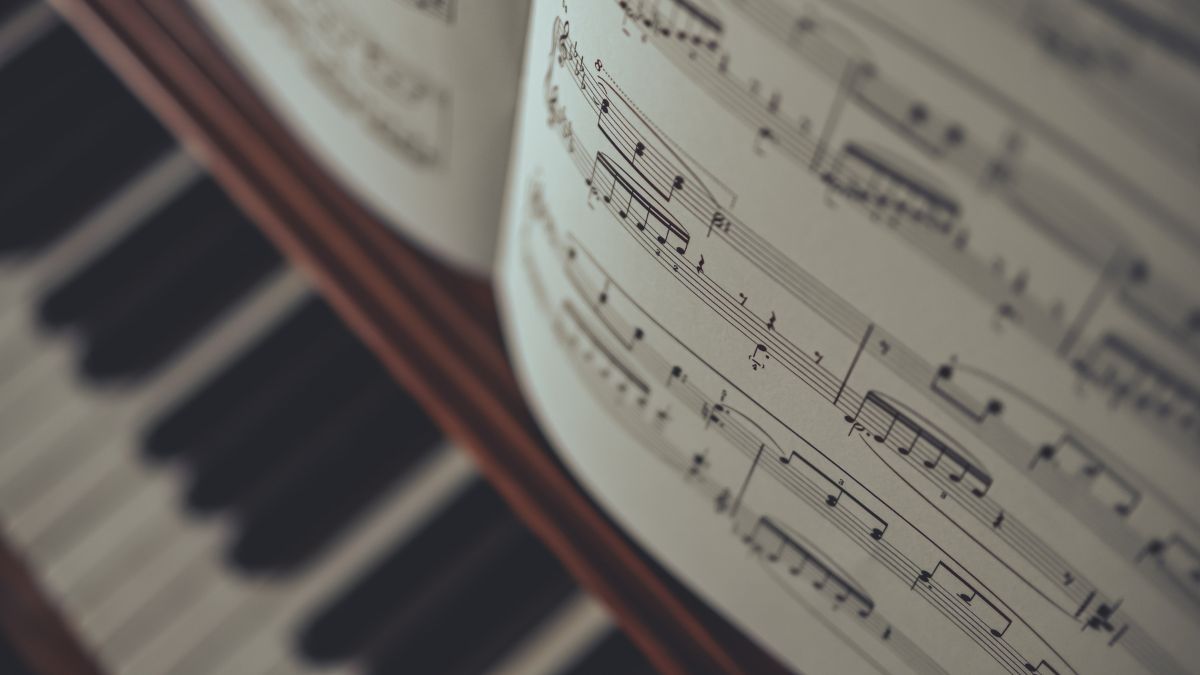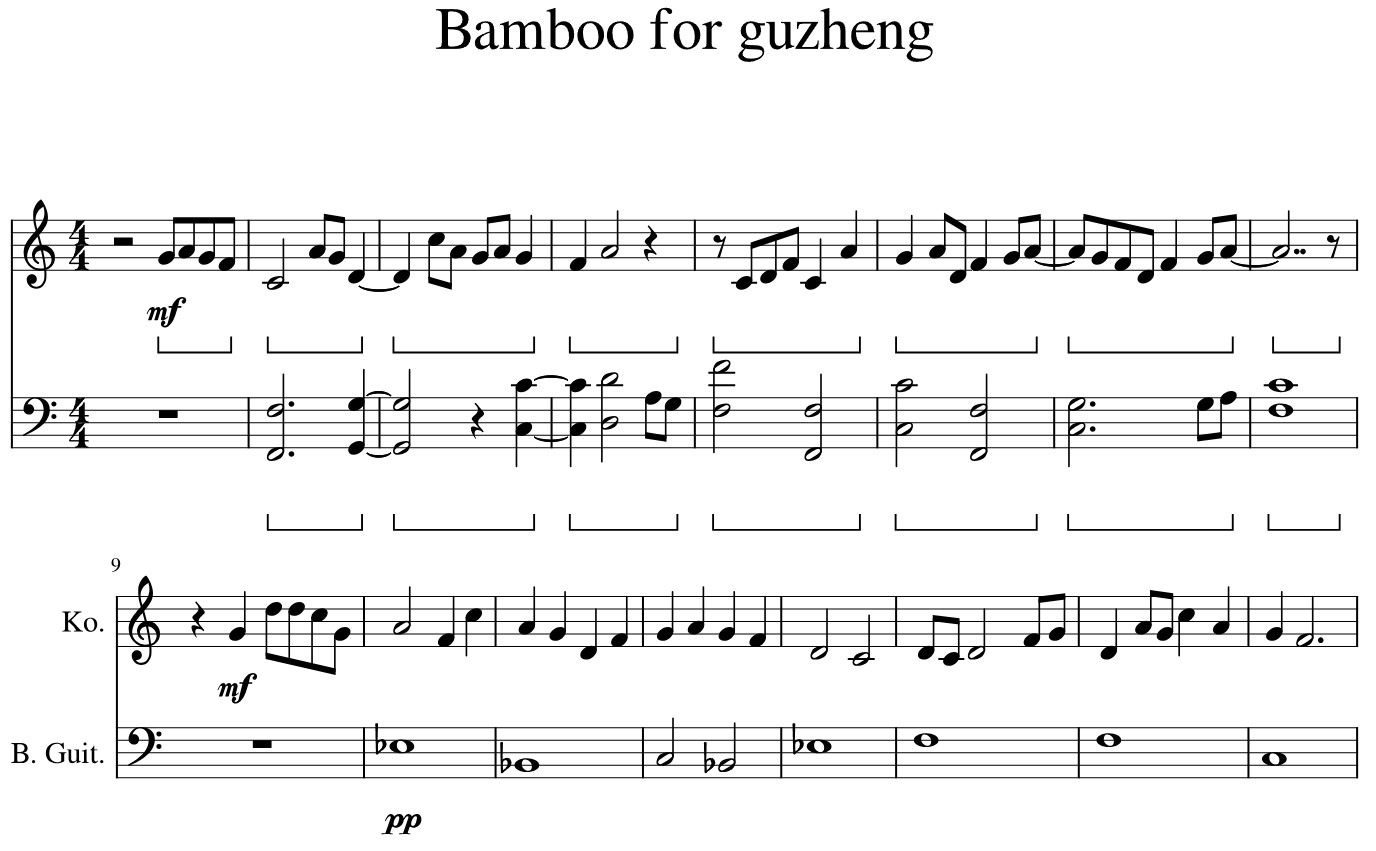Home>Production & Technology>Sheet Music>How To Read Sheet Music Fast
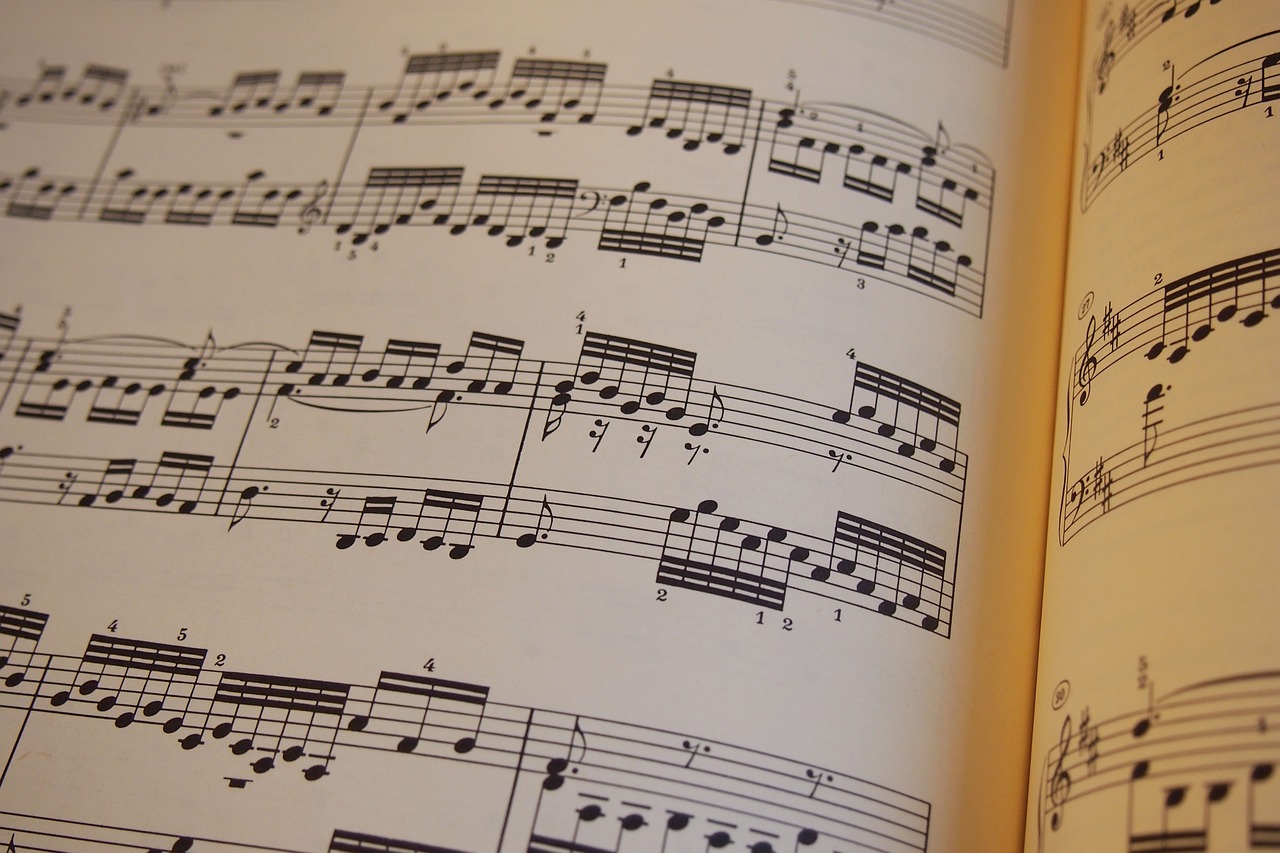

Sheet Music
How To Read Sheet Music Fast
Modified: January 22, 2024
Learn how to read sheet music quickly with our simple and effective techniques. Enhance your musical skills and understanding of sheet music.
(Many of the links in this article redirect to a specific reviewed product. Your purchase of these products through affiliate links helps to generate commission for AudioLover.com, at no extra cost. Learn more)
Table of Contents
Introduction
Sheet music is a written form of music notation that allows musicians to interpret and perform musical compositions. Whether you are a pianist, guitarist, vocalist, or any other type of musician, learning how to read sheet music is essential for honing your skills and expanding your repertoire.
While sheet music may seem daunting at first, with its complex symbols and multitude of lines and symbols, it is actually a highly organized and logical system for representing musical ideas. By familiarizing yourself with the basic elements of sheet music, you will be able to navigate through it with ease, enabling you to learn new songs, accompany other musicians, or even compose your own music.
In this article, we will guide you through the process of reading sheet music, providing you with a solid foundation to build upon. We will cover everything from the different types of clefs to key signatures, time signatures, note reading, dynamics, and more. By the end, you will have the knowledge and skills to read sheet music confidently and efficiently.
Whether you are a beginner or have some experience with sheet music, this guide will provide you with valuable insights and techniques to help you become a faster and more effective music reader. So, grab your instrument, clear your mind, and let’s dive into the exciting world of sheet music!
Are you ready to unlock the secrets of sheet music and take your musical journey to the next level? Let’s get started!
Understanding Sheet Music Basics
Before diving into the intricacies of sheet music reading, it’s important to understand the basic components that make up a musical score. This will give you a solid foundation to build upon as you progress in your musical journey.
The staff is the foundation of sheet music. It consists of five horizontal lines and four spaces, which represent different pitches. The lines and spaces are numbered from bottom to top, with the bottom line being the first line and the top line being the fifth line. Notes are placed on the staff to indicate the pitch that should be played or sung.
Another important aspect of sheet music is the clef. The clef is a symbol placed at the beginning of the staff that indicates the range of pitches that the staff represents. The two most common clefs are the treble clef and the bass clef. The treble clef is used for higher-pitched instruments such as the piano, violin, and flute, while the bass clef is used for lower-pitched instruments such as the bass guitar, cello, and trombone.
Key signatures are also essential in sheet music. They indicate the key in which a piece of music is written. Each key has a set of sharps or flats that are shown at the beginning of the staff. Sharps (#) raise a note by a half-step, while flats (b) lower a note by a half-step. Key signatures help musicians identify and play the correct notes within a given key.
Time signatures are yet another crucial element of sheet music. They are used to indicate the rhythmic structure of a piece. The top number of the time signature represents the number of beats in each measure, while the bottom number indicates the type of note that receives one beat. Common time signatures include 4/4 (four beats per measure), 3/4 (three beats per measure), and 6/8 (six beats per measure).
Understanding these basic elements of sheet music will provide you with a solid foundation for reading and interpreting musical scores. As you continue your journey, you will become familiar with additional symbols and notations that add depth and expressiveness to the music. So, let’s move on to the next section and explore the specifics of recognizing different clefs!
Recognizing the Clefs
As mentioned earlier, clefs are symbols placed at the beginning of the staff to indicate the range of pitches that the staff represents. Understanding and recognizing the different types of clefs is essential for reading sheet music accurately.
The most common clefs you will come across are the treble clef (also known as the G clef) and the bass clef (also known as the F clef). The treble clef is easily recognizable by its curly line that wraps around the second line of the staff. It is primarily used for higher-pitched instruments such as the piano, violin, and flute. Notes written on or between the lines of the treble clef staff represent higher pitch ranges.
On the other hand, the bass clef is identified by the two dots on either side of the fourth line of the staff. It is used for lower-pitched instruments such as the bass guitar, cello, and trombone. Notes written on or between the lines of the bass clef staff represent lower pitch ranges.
It’s important to note that the placement of the notes on the staff in relation to the clef directly represents their pitch. For example, if a note is written on the top line of the treble clef staff, it represents a higher pitch than if it were written on the bottom line. Similarly, if a note is written on the bottom line of the bass clef staff, it represents a lower pitch than if it were written on the top line.
In addition to the treble and bass clefs, there are other less common clefs like the alto clef and tenor clef. The alto clef is used primarily for the viola, while the tenor clef is used for instruments like the cello and bassoon. If you plan on playing these instruments or exploring more advanced sheet music, it’s useful to familiarize yourself with these clefs as well.
By understanding the different clefs and their respective ranges, you will be able to accurately interpret and play the notes on the staff. As we move forward, we will delve deeper into key signatures and time signatures, essential components for reading sheet music fluently. So, let’s continue our journey into the world of sheet music!
Identifying Key Signatures
Key signatures play a vital role in sheet music as they indicate the key in which a piece of music is written. Understanding key signatures is crucial for correctly interpreting and playing the music.
A key signature is represented by a series of sharps (#) or flats (b) that are placed at the beginning of a staff, right after the clef. The number of sharps or flats in the key signature determines the key of the piece.
For example, a key signature with one sharp signifies the key of G major or E minor. The sharp symbol is placed on the F line of the staff, indicating that every F note in the piece should be played or sung as F#.
On the other hand, a key signature with two flats indicates the key of B♭ major or G minor. The flat symbols are placed on the B and E lines of the staff, indicating that every B and E note in the piece should be played or sung as B♭ and E♭, respectively.
It’s worth noting that the order of sharps or flats in the key signature follows a specific pattern. For sharps, the order is F♯, C♯, G♯, D♯, A♯, E♯, and B♯. For flats, the order is B♭, E♭, A♭, D♭, G♭, C♭, and F♭. This pattern allows musicians to quickly identify the key based on the sharps or flats present in the key signature.
It’s important to spend some time familiarizing yourself with the common key signatures and their corresponding major and minor keys. This will save you time and effort when reading and playing sheet music.
While key signatures provide useful information for playing the correct notes, it’s essential to look out for accidentals. Accidentals are temporary alterations to the pitch of a note that are not indicated in the key signature. They are represented by sharp, flat, or natural symbols placed immediately before the note.
By properly identifying key signatures and being aware of accidentals, you will gain a deeper understanding of the musical structure and be able to navigate through sheet music more confidently.
As we move forward, we will explore time signatures, another essential aspect of sheet music. So, let’s continue our journey and dive into the fascinating world of time signatures!
Understanding Time Signatures
Time signatures are crucial elements in sheet music as they provide information about the rhythmic structure of a piece. By understanding time signatures, you can accurately interpret and perform the music as intended by the composer.
A time signature consists of two numbers stacked vertically at the beginning of a staff. The top number represents the number of beats in each measure, while the bottom number indicates the note value that receives one beat. For example, in a time signature of 4/4, there are four beats in each measure, and the quarter note receives one beat.
Common time signatures include 4/4 (also known as common time), 3/4, and 6/8. Let’s take a closer look at each of these time signatures:
- 4/4: This is the most common time signature and is often referred to as “common time.” It consists of four beats in each measure, with the quarter note receiving one beat. This time signature is commonly found in a variety of musical genres, including pop, rock, and classical.
- 3/4: This time signature is known as “three-four” time. It consists of three beats in each measure, with the quarter note receiving one beat. 3/4 time is frequently used in waltzes and other dances, giving the music a flowing and lilting quality.
- 6/8: In 6/8 time, there are six beats in each measure, and the eighth note receives one beat. This time signature is often associated with compound meter and is commonly found in folk, jazz, and march music. The rhythm in 6/8 time is typically felt in two groups of three eighth notes, giving it a distinctive syncopated feel.
Other time signatures, such as 2/4, 5/4, and 7/8, are less common but still appear in various musical compositions.
Understanding time signatures allows you to grasp the rhythmic structure of a piece and know when to emphasize certain notes or beats. It helps you maintain a steady tempo and synchronize with other musicians when performing in an ensemble.
As you become more comfortable with reading time signatures, you’ll be able to anticipate the rhythm and flow of the music, making it easier to play or sing confidently.
Now that you have a good understanding of time signatures, let’s move on to the next section, where we will explore reading notes on the staff, a fundamental skill in sheet music reading.
Reading Notes on the Staff
Reading notes on the staff is an essential skill for any musician. It allows you to decipher the pitch of each note and accurately translate it into sound. By understanding how notes are represented on the staff, you will be able to play or sing melodies with precision.
In traditional sheet music notation, notes are represented by oval-shaped symbols placed on the lines and spaces of the staff. Each line and space corresponds to a specific pitch. Let’s take a closer look at how the notes are placed on the staff:
- Treble Clef – The notes on the lines of the treble clef staff, from bottom to top, are E, G, B, D, and F. The notes in the spaces, from bottom to top, are F, A, C, and E. To remember the notes on the lines, you can use the mnemonic “Every Good Boy Deserves Fudge.” For the notes in the spaces, you can use the mnemonic “FACE.” These mnemonics can be helpful in the beginning stages of learning to read sheet music.
- Bass Clef – The notes on the lines of the bass clef staff, from bottom to top, spell G, B, D, F, and A. The notes in the spaces, from bottom to top, are A, C, E, and G. To remember the notes on the lines, you can use the mnemonic “Good Boys Do Fine Always.” For the notes in the spaces, you can use the mnemonic “All Cows Eat Grass.”
It’s important to note that notes can extend beyond the staff lines and spaces by using ledger lines. Ledger lines are small lines that extend above or below the staff to accommodate higher or lower pitches. They are used to indicate notes that fall outside the range of the staff.
Additionally, notes can also be altered by accidentals – sharp (#), flat (b), or natural (♮) symbols. Accidentals modify the pitch of a note by raising or lowering it by a half-step. They are placed before the note and are only effective within the measure unless there is a corresponding accidental in the key signature.
By understanding how notes are represented on the staff and being familiar with the different clefs, you will be able to identify the pitch of each note and play or sing the correct pitch accurately.
In the next section, we will explore note durations and rests, which are crucial for understanding the rhythm in sheet music. So, let’s continue our journey and dive deeper into the world of sheet music notation!
Understanding Note Durations and Rests
In sheet music, note durations and rests are essential components that indicate the length of time a note should be played or the silence between notes. Understanding note durations and rests is crucial for accurately interpreting the rhythm of a piece.
Notes are represented by different shapes and stems, which determine their duration. The most common note durations include whole notes, half notes, quarter notes, eighth notes, and sixteenth notes. Let’s explore each of these:
- Whole Note – A whole note is represented by an oval-shaped notehead without a stem. It indicates the longest duration, typically sustained for four beats in common time (4/4).
- Half Note – A half note is represented by an oval-shaped notehead with a straight stem. It lasts for two beats in common time.
- Quarter Note – A quarter note is represented by a filled-in oval notehead with a straight stem. It lasts for one beat in common time.
- Eighth Note – An eighth note is represented by a filled-in oval notehead with a straight stem and one flag. It lasts for half a beat in common time.
- Sixteenth Note – A sixteenth note is represented by a filled-in oval notehead with a straight stem and two flags. It lasts for one-quarter of a beat in common time.
Rests, on the other hand, represent periods of silence in the music. They are indicated by symbols that correspond to the duration of the corresponding note. The most common rests include whole rests, half rests, quarter rests, eighth rests, and sixteenth rests, which align with the durations of their respective notes.
Understanding note durations and rests allows you to accurately interpret the rhythm of a piece and determine the appropriate timing for each note. By combining different note durations and rests, composers create rhythmic patterns that give music its unique character and feel.
It’s worth noting that notes can also be combined and connected by beams, indicating a grouping of notes with the same rhythmic value. Beams help to visually organize notes and make them easier to read.
As you delve further into sheet music reading, you may encounter more complex note durations and rests, such as triplets, tied notes, and dotted notes. These nuances add depth and variety to the rhythm of the music.
Now that we have a solid understanding of note durations and rests, let’s explore the next section, where we will delve into reading dynamics and articulations, which bring expressiveness and interpretation to sheet music.
Reading Dynamics and Articulations
Dynamics and articulations are markings within sheet music that provide instructions on how to perform a piece with expressiveness and interpretation. They add depth and nuance to the music, allowing musicians to convey emotions and bring the composition to life.
Dynamics refer to the volume of the music and are represented by specific markings and symbols. Here are some common dynamic markings:
- Fortissimo (ff) – Indicates a very loud volume
- Forte (f) – Indicates a loud volume
- Mezzo forte (mf) – Indicates a moderately loud volume
- Mezzo piano (mp) – Indicates a moderately soft volume
- Piano (p) – Indicates a soft volume
- Pianissimo (pp) – Indicates a very soft volume
These dynamic markings are typically placed above or below the staff and can be used to indicate a specific section or passage of music. It’s important to pay attention to these markings, as they provide guidance on the intended volume and intensity of the music.
Articulations, on the other hand, refer to the way in which notes are played or sung. They provide instructions on how to shape each individual note and contribute to the overall musical expression. Here are some common articulation markings:
- Staccato – A dot placed above or below a note, indicating a short and detached sound
- Legato – A curved line or arc placed above or below a series of notes, indicating that they should be played smoothly and connected
- Tenuto – A horizontal line placed above or below a note, indicating that the note should be played for its full value and slightly emphasized
- Accent – A sideways V-shaped symbol placed above or below a note, indicating that the note should be played with a stronger attack or emphasis
There are many other articulation markings that provide expressive instructions, such as slurs, trills, and tremolos. These markings help guide musicians in shaping the sound, adding character and individuality to the performance.
Reading dynamics and articulations is essential for accurately interpreting the intentions and emotions behind the music. They provide valuable insight into the musical expression and allow you to create a more captivating and nuanced performance.
Now that we have explored dynamics and articulations, let’s move on to the next section, where we will delve into mastering sight-reading techniques to help you read sheet music more fluently.
Mastering Sight-Reading Techniques
Sight-reading is the ability to read and perform a piece of music on the spot, without prior practice. It is a valuable skill for any musician, as it allows you to quickly learn new music and adapt to different musical situations. Here are some techniques to help you master the art of sight-reading:
- Scan the Music: Before diving into playing, take a few moments to scan the sheet music. Look for key signatures, time signatures, dynamic markings, and any challenging sections or patterns. This will give you a general overview of what to expect in the piece.
- Rhythm First, Notes Second: Focus on the rhythm of the piece first. Tap or count the beats to establish a steady pulse. Pay close attention to note durations, rests, and any complex rhythmic patterns. Once you have a handle on the rhythm, start adding the notes.
- Chunking: Rather than reading note by note, try to read small groups of notes as chunks. Look for patterns, scales, arpeggios, or repeating figures. This will help you process the music more quickly and efficiently.
- Look Ahead: Always keep your eyes scanning ahead, a measure or two ahead of where you are currently playing. This allows you to anticipate upcoming notes, rhythms, and any changes in dynamics or articulations.
- Keep a Steady Tempo: Sight-reading can be challenging, but try to maintain a steady tempo throughout. Resist the temptation to slow down or stop if you make a mistake. Keep going and stay in the flow of the music.
- Embrace Mistakes: Understand that mistakes are a natural part of sight-reading. Instead of dwelling on the errors, focus on the overall musicality and maintaining a sense of flow. Keep going and use the mistakes as learning opportunities for future sight-reading sessions.
- Practice Sight-Reading Regularly: Like any skill, sight-reading improves with practice. Set aside dedicated time for sight-reading exercises, using a variety of musical genres and difficulty levels. Challenge yourself with new pieces consistently to expand your sight-reading abilities.
- Play with Others: Sight-reading with other musicians can be a valuable experience. It forces you to synchronize and adapt to different playing styles and interpretations. Seek opportunities to sight-read in chamber groups, ensembles, or jam sessions.
Remember, sight-reading is more about capturing the overall essence and expression of the music rather than playing every note perfectly. With regular practice and a focused approach, you will become more comfortable and confident in your sight-reading abilities.
Now that you have learned some valuable sight-reading techniques, let’s move on to the next section, where we will share some tips for reading sheet music faster and more effectively.
Tips for Reading Sheet Music Faster
Reading sheet music efficiently and quickly is a valuable skill that can greatly enhance your musical abilities. Here are some tips to help you read sheet music faster and more effectively:
- Practice Regularly: Consistent practice is crucial for improving your sheet music reading skills. Set aside dedicated time each day to work on reading new pieces, sight-reading exercises, or even simple melodies. The more you practice, the more familiar you’ll become with different musical patterns and symbols.
- Focus on Patterns: Look for recurring patterns in the music, such as scales, arpeggios, or chord progressions. By recognizing these patterns, you can anticipate the notes and play more efficiently. Take note of any melodic or rhythmic motifs that appear frequently throughout the piece.
- Develop a Mental Map: Develop a mental map of the notes on the staff by practicing note recognition exercises. Try using flashcards or online tools that randomly display notes for you to identify. The more you practice recognizing and naming the notes quickly, the easier it will become to read sheet music fluently.
- Use Landmarks: Identify key landmarks on the staff, such as middle C, ledger lines, or specific clef symbol positions. This will help you orient yourself and make faster note associations. With practice, you’ll develop a sense of spatial awareness on the staff, allowing you to read notes more efficiently.
- Master Rhythm: Pay close attention to the rhythm of the music. Practice clapping or tapping the rhythm away from your instrument. Becoming proficient in rhythm recognition will free up mental space to focus on note reading, enabling you to read sheet music more quickly and accurately.
- Read Ahead: Train yourself to read ahead by keeping your eyes scanning slightly ahead of where you are playing. This will allow you to anticipate upcoming notes, rhythms, and any changes in dynamics or articulations. The more you can read ahead, the smoother your reading will become.
- Break it Down: When faced with a challenging passage, break it down into manageable sections. Focus on one small part at a time, practicing it slowly and gradually increasing the tempo. This will help you tackle difficult sections more effectively without feeling overwhelmed.
- Mark Annotations: Feel free to mark the sheet music with temporary annotations to help you remember certain elements. Use pencils to circle or underline important notes, rhythmic patterns, or dynamics. Be mindful not to clutter the sheet music excessively, but use these annotations as visual aids to assist you in reading more efficiently.
Remember, reading sheet music faster is a gradual process that improves with consistent practice and exposure to various musical pieces. Stay patient and allow yourself to grow and develop at your own pace.
Now that you have some helpful strategies for reading sheet music faster, let’s move on to the concluding section.
Conclusion
Congratulations! You have now journeyed through the vast world of sheet music and gained valuable insights into reading and interpreting musical scores. By understanding the basics of sheet music such as clefs, key signatures, time signatures, and note reading, you have developed a strong foundation to build upon.
As you delved deeper, you explored dynamics, articulations, note durations, rests, and even sight-reading techniques. These skills contribute to your ability to bring the music to life, infusing it with expressiveness, and capturing the composer’s intentions.
Remember that reading sheet music is not just about deciphering symbols and notes, but about connecting with the music emotionally and expressing it through your instrument or voice. Practice consistently, challenge yourself with new pieces, and continually strive to improve your sheet music reading skills.
With time, patience, and dedication, you will notice significant progress in your ability to read sheet music faster and more effectively. You will become more confident in your interpretation of the music, allowing you to perform with greater precision and expression.
Keep exploring sheet music from different genres and styles, and don’t be afraid to push yourself outside of your comfort zone. Embrace the challenges and enjoy the rewards that come with expanding your musical horizons.
So, take your newfound knowledge, sit at the piano, pick up your guitar, or prepare your voice, and let the sheet music guide you on an incredible journey of musical exploration and expression!


